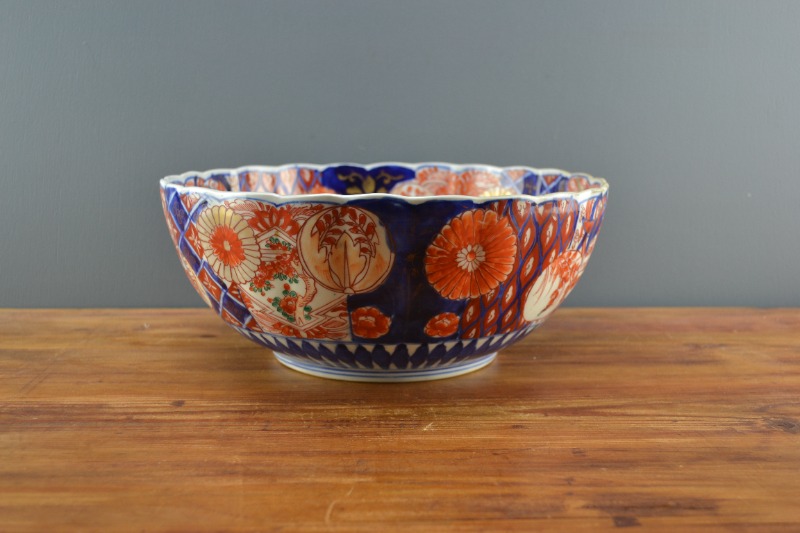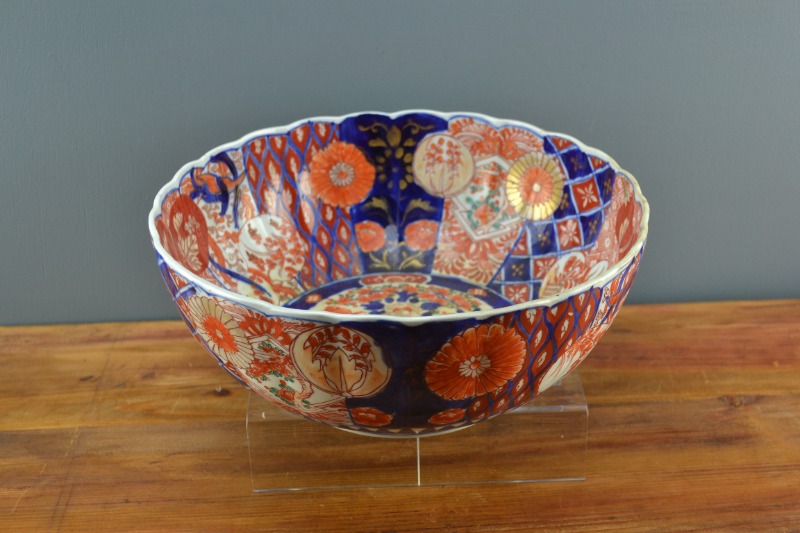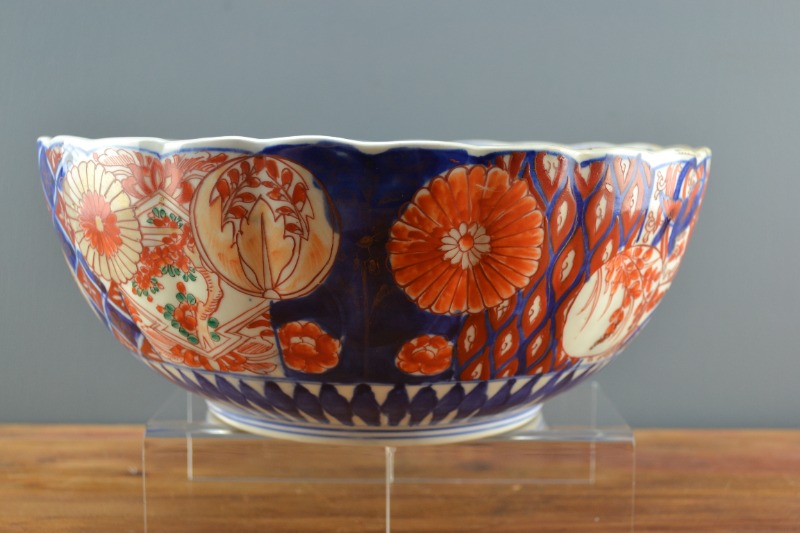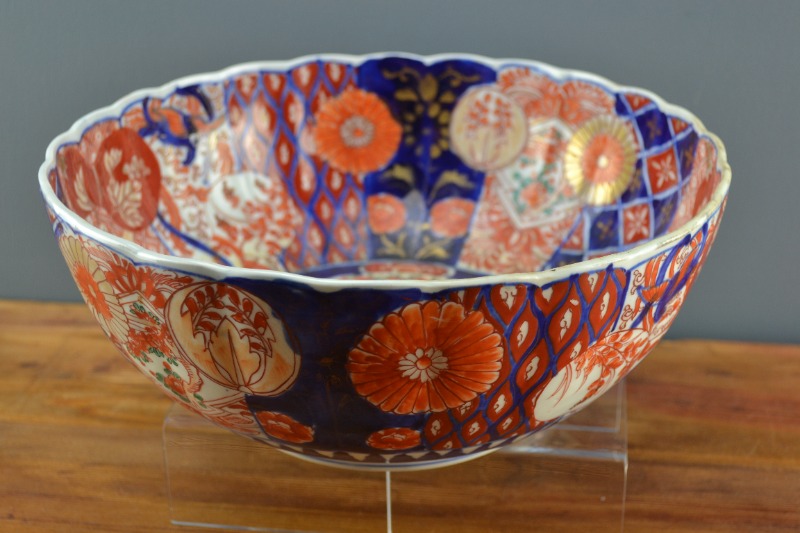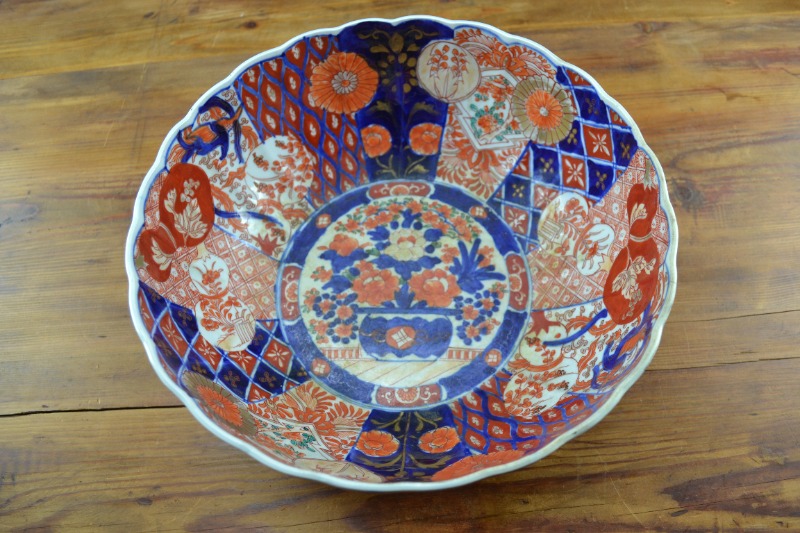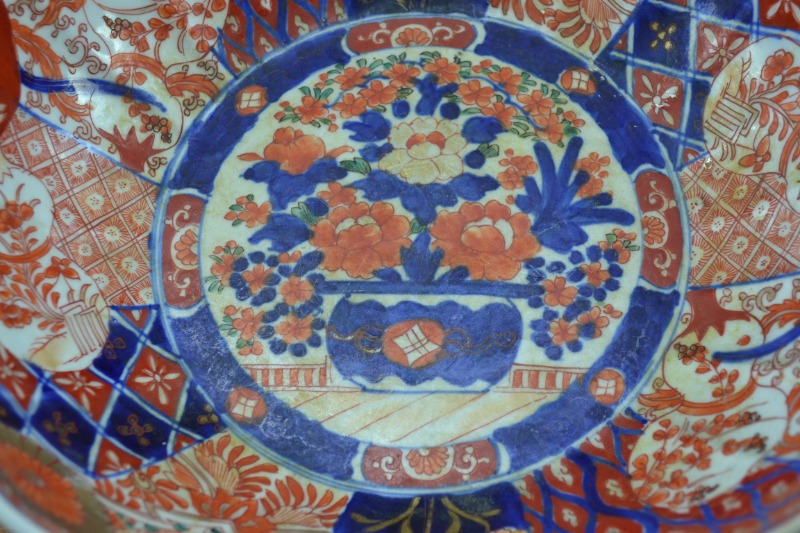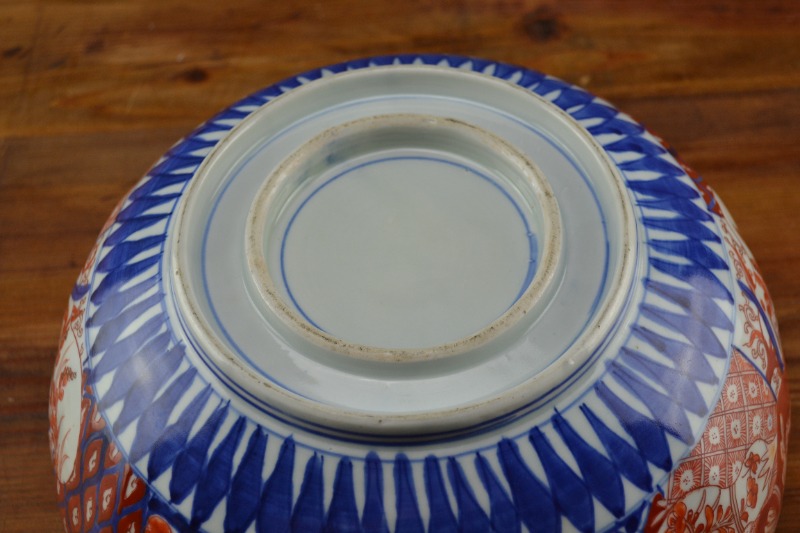Large Japanese Scalloped Imari Bowl with Double Foot Rim, Meiji Period c. 1870-1880
Age:
c. 1870-1880
Material:
Porcelain
Dimensions:
26cm x 12cm
Shipping:
Standard Parcel
Price:
SOLD
A large Japanese scalloped bowl decorated in the Imari pattern in overglaze blue, red and gold with green leaves. It has an outer glazed foot rim and inner unglazed foot rim, dating it to the early Meiji period.
The enamels are in good condition with slight wear to the gold and some minor age staining. There are no chips but a small historic, possibly firing crack to the rim.
Imari ware is a Western term for a brightly-coloured style of Arita ware Japanese export porcelain made in the area of Arita, in the former Hizen Province. The name derives from the port of Imari, Saga, from which wares were shipped to Nagasaki, where the Dutch East India Company and the Chinese had trading outposts. Arita‘s kilns were set up in the 17th century, after kaolin was discovered in 1616. They became the heart of the Japanese porcelain industry. Imari began to be exported to Europe when the Chinese kilns at Jingdezhen were damaged in the political chaos and the new Qing dynasty government halted trade in 1656–1684. Export of Imari surged again in late 19th century (Meiji era) when Japonism flourished in Europe.

